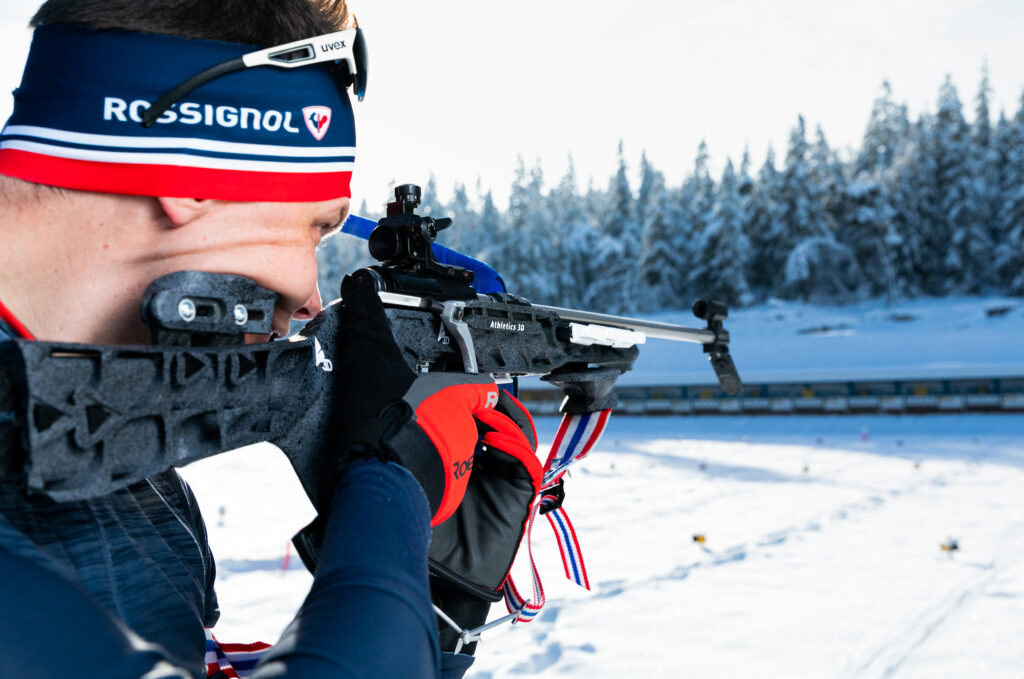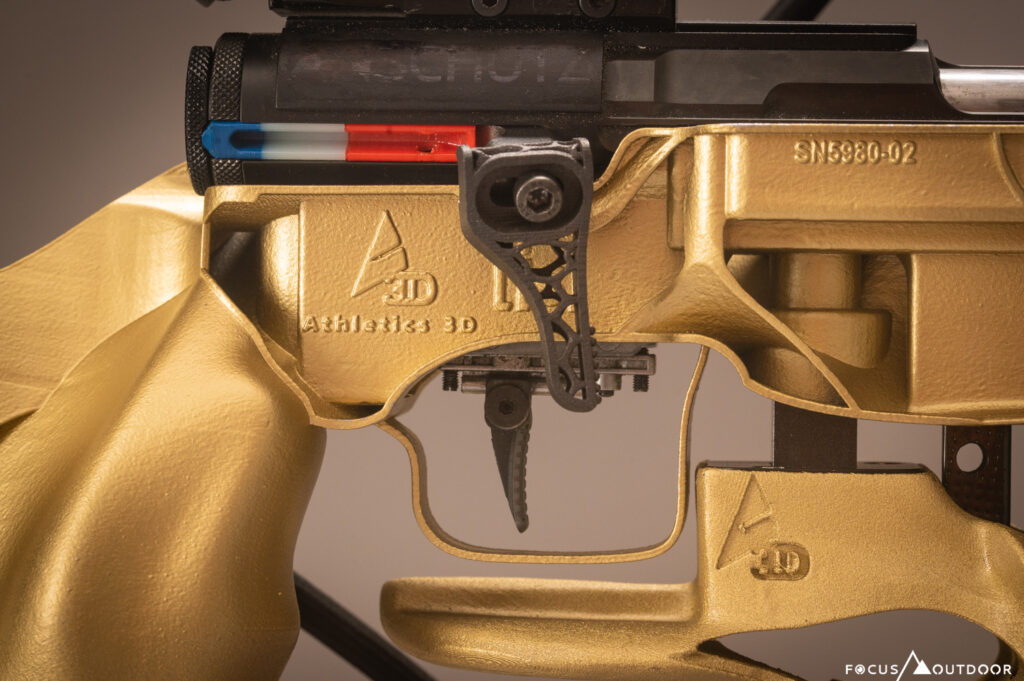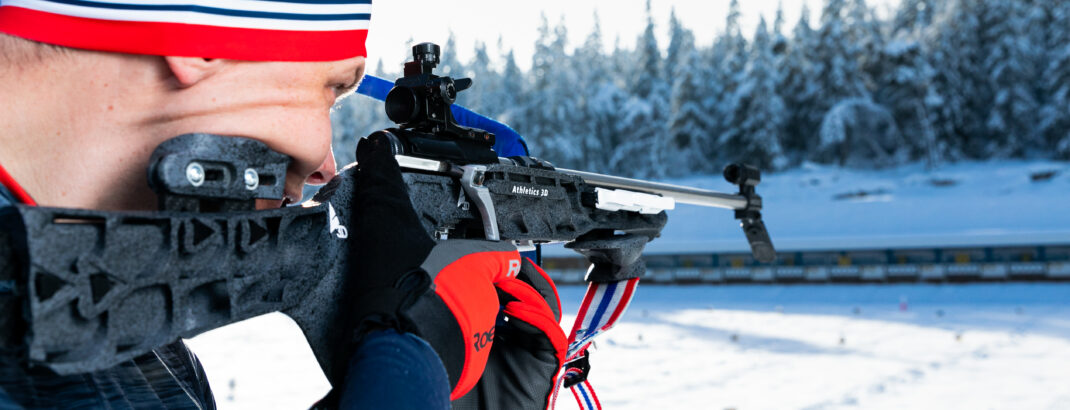CBAM is an exciting and unique technology which is increasingly being used in the field of elite sports…
Introduction
Ricoh 3D has responded to the changing demands of the modern workplace and harnessed over 80 years of manufacturing experience to provide a full range of end-to-end solutions, in the 3D printing field. As a company which prides itself on co-creation, the Ricoh 3D team regularly works with new and existing partners and customers to understand ‘pain points’ and provide innovative products and services to support businesses.
In this particular project, Ricoh 3D collaborated with strategic partner, Impossible Objects – a US-based firm who specialise in Additive Manufacturing using their CBAM (Composite Based Additive Manufacturing) technology, to produce carbon or glass fibre products. Together, the duo also worked closely with Athletics 3D – a French firm which specialises in making custom ergonomic equipment for athletes, including disciplines such as fencing, modern pentathlon, rowing, hockey and others. Established in 2017, Athletics 3D now works with some of the world’s top elite athletes.
Application
Biathlon is an Olympic winter sport that combines cross-country skiing and rifle operating and is treated as a race. Ahead of the 2023 Biathlon World Championships in Oberhof, Germany, several elite athletes requested Athletics 3D to find a multi-beneficial solution to improve reload speed (and consistency of movement) and to decrease the overall rifle movement and effort between each shot.
Biathlon rifles are bolt action and are fired either prone or while standing up, depending on the round. The bolt on a biathlon rifle is an incredibly lightweight ‘straight pull’ (also known as a Fortner Action) and can be operated using just the trigger finger, without the operator having to move their arm.
A standard bolt-handle, widely used by biathletes to assist with their reload mechanism is made of aluminium and typically weighs around 15g. This highlighted to Athletics 3D the difficulty and ‘fineness of margins’ which would be required to provide the athletes with a suitable material and physiological advantages over their competitors.
Having worked with Ricoh 3D in the past, Athletics 3D contacted Ricoh 3D’s Materials Specialist, Enrico Gallino to discuss a bespoke solution.

Copyright Alain Lamour
“The goal had been to improve the hand movement during the reloading action for athletes.
Clément Jacquelin, President and Founder of Athletics 3D
“According to pistol grip shapes and hand sizes, each athlete can optimise his hand movement to improve his
arm stabilisation during this reloading process.
“After some prototypes were developed and shown to athletes, we finalised the shape before printing with the right material.”
CBAM based Solution
After multiple technical discussions, the solution presented itself in the form of Impossible Objects’ unique CBAM technology.
CBAM printers operate in several steps. The process starts by feeding long fibre sheets of carbon or fibreglass into the machine. Layered shapes from CAD slices are then printed onto the fibre sheets using clear fluid and thermal inkjet technology.
High-performance polymer powder is then applied to the fibre sheet, adhering to the printing fluid. Any excess powder is then removed; leaving behind powder in the shape of the bitmap. This process is repeated for all layers.
The sheets are stacked and then heated to the melting point of the polymer and compressed to consolidate the part to the designed height. Un-bonded portions of the sheets fibres are then removed through a mechanical or chemical process, revealing the final completed part.
Want to know more about CBAM?
For a more in-depth analysis of CBAM technology, please watch our dedicated webinar on the subject.
Once an ‘acceptable’ design was created and further approved by experts at Athletics 3D – in line with Winter Olympic biathlon competition rules and regulations, Impossible Objects brought the CBAM bolt handle to life, printing the design using carbon fibre reinforced PolyEtherEtherKetone (PEEK).
Carbon Fibre PEEK (otherwise known in the industry as CF PEEK) was the ideal material to use for the new bolt handle, as it has an incredibly high strength to weight ratio, high impact and wear resistance and does not warp or shrink. This meant it would be perfectly suitable for use in a very cold environment, where it is likely it would get knocked or impacted over the course of an event from both the conditions and athlete use.
It was also important that the bolt handle was light from a competitive point of view, both physically and mentally. In addition to marginal gains through ever-evolving equipment design and manufacture, for high-performance athletes, the belief that their equipment will give them the edge is just important as any real-world advantages the equipment actually offers.
The process explained
Clément Jacquelin, President and Founder of Athletics 3D, explained the process.
He said: “The goal had been to improve the hand movement during the reloading action for athletes.
“According to pistol grip shapes and hand sizes, each athlete can optimise his hand movement to improve his arm stabilisation during this reloading process.
“After some prototypes were developed and shown to athletes, we finalised the shape before printing with the right material.”
Results
Before, using a typical aluminium bolt handle.
After, using the new CF PEEK bolt handle.
The new part saw a significant weight reduction of 74%, from 15g to now just 4g.
The weight reduction not only means the rifle is lighter overall, but the action of the bolt can now be operated more quickly, without a fear of it breaking, thanks to its durability.
Athletics 3D’s top biathlon athlete was also satisfied with the surface finish and ergonomics of the part.
Testimonial

Copyright Focus Outdoor
“It’s always highly rewarding to see tangible benefits and recognition of
Enrico Gallino, Ricoh 3D
3D printing projects.”
“Our team and top athlete have been seduced by the PEEK CF material provided by Impossible Objects and Ricoh 3D,” said Clément.
“Using gloves and practicing Biathlon in all conditions, athletes have selected the surface finishing adapted to their hand movement.
“From their first tests, they have been confident in using this material, and from the practice range they have put their full trust behind their rifle, giving them a mental competitive advantage.”
He added: “We are extremely happy to reach six Gold Medals for the Biathlon World Championships 2023 in Oberhof – and look forward to further collaborations and successes with Ricoh 3D and Impossible Objects in the elite sports sector.”
Darren from Impossible Objects said: “Impossible Objects aims to 3D print reliable end use components at record speeds and with superior material properties.
“It was a privilege to work alongside the Athletics 3D Team to manufacture and optimize the design of the custom bolt-handle.
“Our Carbon Fiber PEEK composite material has strength-to-weight properties similar to aluminium while being 70% lighter.
“We look forward to providing confident bespoke solutions to a wide range of athletes in the future!”
Ricoh 3D’s Enrico Gallino commented: “It’s fantastic to see 3D printing making the difference at the highest level, even if it’s just marginal gains.
“It’s always highly rewarding to see tangible benefits and recognition of 3D printing projects.
“Once again, it’s a pleasure working with Impossible Objects and Athletics 3D, and we look forward to further co-creation in the future.”
